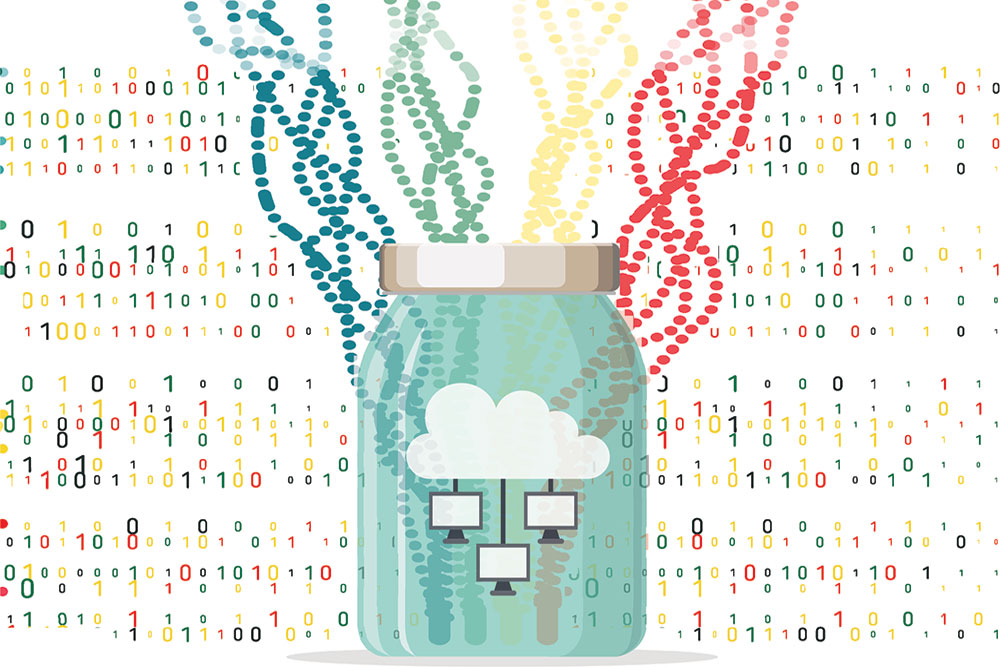The convergence between the top two trends shaping the world today presents tremendous opportunities that can foster rapid progress towards business goals of sustainability and digitalisation.
A company strategy today void of digitalisation and sustainability is a rarity. However, in most companies these topics are discussed and managed separately. Digital transition and sustainability transition are treated as different paths. But the time has come to unleash the power of convergence between digital tech and sustainability. It is not a twin transition, but an integrated transition. The outcome of this convergence is mutually beneficial.
Amid the debate around artificial intelligence (AI), access to infinite storage space and ubiquitous computing, we need to realise that there is an environmental impact associated with all this. Whether it is the energy requirement or the environmental complexities of the supply chain, the footprint is increasing in a drastic manner. Cloud computing and AI have large energy requirements and this trend will only multiply.
We are also passing through a period of data explosion in what is known as the zettabyte era. According to a World Bank report, 90% of all data was generated in the last two years alone. In his book World Wide Waste, Gerry McGovern notes that 90% of data is never accessed three months after it is stored.
In addition, as observed by Moore’s law, we keep cramming smaller and faster components into the chip, which in turn will generate more heat. We will then have to cool the equipment and we need more electricity to do this.
It is in the above context that the convergence of digital tech and sustainability is crucial for a sustainable future. Computing must be powered by green energy and systems need to become more efficient. Circularity should be a decree for the industry. Green coding must be an integral part of education and skilling. Modernising some legacy applications for improved efficiency is a good start, but without a clear path of integrating sustainability with digitalisation, many global goals will be displaced.
Digital technologies can be seen facilitating environmental benefits. But we are now poised for the next level of the tech-enabled sustainability journey. This is fueled by multiple drivers.
Using Digital Tech for ESG Compliances
The era of voluntary reporting is moving into a regulatory regime. This shift is bringing a high level of accountability to disclose reliable and accurate data. For example, the Business Responsibility and Sustainability Reporting, which is now mandatory in India, requires a sign-off from one of the board members.
Consider a company operation across multiple countries. The company will have to comply with requirements related to reporting in each of these countries and many ESG metrics. The whole of this data collection, monitoring, verification and reporting can be simplified by digital tech. It improves the accuracy and reliability of the data while being more efficient. Regulatory compliance will push companies to adopt digital solutions for generating accurate and reliable sustainability data and information.
The Data Potential
The second driver is the possibilities and potential of what we can do with data. Let me try to demonstrate this with a simple example. I can get climate data like probability of rain, moisture in air or temperature and juxtapose that with data on water requirements for the cucumber plant that I am growing and current soil moisture levels or nutrient levels. Now this data can be combined with the pump capacity and the pipeline capacity and fed into a machine which is taught to process the data to ensure that the right amount of water and nutrients goes to my cucumber plant to generate the best output. This potential of convergence of information technology, operational technology and engineering technology data sets and creating intelligent decisions can apply to multiple use cases in the industry. Putting this into a technology context, internet of things is used to harvest data from the physical environment. Later, the data is fed to an AI model. Then, the developed digital twin can be employed to optimise processes in the industry.
Taking a completely different case, money is feeling the heat from sustainability. We are seeing a lot of action around financial institutions, especially with respect to climate risk. Last year, around the same time of the year, the Basel principles for effective management and supervision of climate-related financial risks were published.
Climate risk analysis is unlike classical risk analysis, which looks at the past to create probability into the future. It is more focused on predicting the future. Aligning multiple variables and building scenarios is key to climate risk assessment. Climate risk assessment tools and strategies will rely on multiple data sources. Digital technologies will help financial institutions process vast amounts of data and information through a range of algorithm-based models.
Digital for Trust
There is a huge trust deficit when it comes to reporting on sustainability, which is known as greenwashing. IT technologies will be a critical component to improve that trust quotient around sustainability claims. There are many customers who are still sitting on the fence when it comes to buying sustainable options because they are not sure of the sustainability claims.
The possibilities that blockchain offers are enormous in this space. Yes, their impact on the environment has tarnished their reputation, but we need to realise that proof-of-stake chains are much more energy-efficient than proof-of-work chains.
Digital technology is available and, depending on adoption, will need fine-tuning for better results. I am not saying that digital tech is the panacea for sustainability, but it has the potential to accelerate our sustainability journey.
Digital tech and sustainability have to take their relationship to the next level. That is the crucial next step needed to help solve some of the world’s most pressing challenges when it comes to reducing emissions and solving the climate emergency.
Santhosh Jayaram is the global head of sustainability at HCL Technologies











